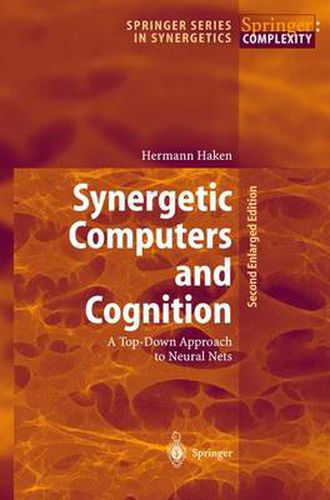Readings Newsletter
Become a Readings Member to make your shopping experience even easier.
Sign in or sign up for free!
You’re not far away from qualifying for FREE standard shipping within Australia
You’ve qualified for FREE standard shipping within Australia
The cart is loading…






This title is printed to order. This book may have been self-published. If so, we cannot guarantee the quality of the content. In the main most books will have gone through the editing process however some may not. We therefore suggest that you be aware of this before ordering this book. If in doubt check either the author or publisher’s details as we are unable to accept any returns unless they are faulty. Please contact us if you have any questions.
This book presents a novel approach to neural nets and thus offers a genuine alternative to the hitherto known neuro-computers. This approach is based on the author’s discovery of the profound analogy between pattern recognition and pattern formation in open systems far from equilibrium. Thus the mathematical and conceptual tools of synergetics can be exploited, and the concept of the synergetic computer formulated. A complete and rigorous theory of pattern recognition and learning is presented. The resulting algorithm can be implemented on serial computers or realized by fully parallel nets whereby no spurious states occur. Explicit examples (e.g. recognition of faces and city maps) are provided. The recognition process is made invariant with respect to simultaneous translation, rotation, and scaling, and allows the recognition of complex scenes. Oscillations and hysteresis in the perception of ambiguous patterns are treated, as well as the recognition of movement patterns. A comparison between the recognition abilities of humans and the synergetic computer sheds new light on possible models of mental processes. The synergetic computer can also perform logical steps such as the XOR operation. The new edition includes a section on transformation properties of the equations of the synergetic computer and on the invariance properties of the order parameter equations. Further additions are a new section on stereopsis and recent developments in the use of pulse-coupled neural nets for pattern recognition.
$9.00 standard shipping within Australia
FREE standard shipping within Australia for orders over $100.00
Express & International shipping calculated at checkout
This title is printed to order. This book may have been self-published. If so, we cannot guarantee the quality of the content. In the main most books will have gone through the editing process however some may not. We therefore suggest that you be aware of this before ordering this book. If in doubt check either the author or publisher’s details as we are unable to accept any returns unless they are faulty. Please contact us if you have any questions.
This book presents a novel approach to neural nets and thus offers a genuine alternative to the hitherto known neuro-computers. This approach is based on the author’s discovery of the profound analogy between pattern recognition and pattern formation in open systems far from equilibrium. Thus the mathematical and conceptual tools of synergetics can be exploited, and the concept of the synergetic computer formulated. A complete and rigorous theory of pattern recognition and learning is presented. The resulting algorithm can be implemented on serial computers or realized by fully parallel nets whereby no spurious states occur. Explicit examples (e.g. recognition of faces and city maps) are provided. The recognition process is made invariant with respect to simultaneous translation, rotation, and scaling, and allows the recognition of complex scenes. Oscillations and hysteresis in the perception of ambiguous patterns are treated, as well as the recognition of movement patterns. A comparison between the recognition abilities of humans and the synergetic computer sheds new light on possible models of mental processes. The synergetic computer can also perform logical steps such as the XOR operation. The new edition includes a section on transformation properties of the equations of the synergetic computer and on the invariance properties of the order parameter equations. Further additions are a new section on stereopsis and recent developments in the use of pulse-coupled neural nets for pattern recognition.